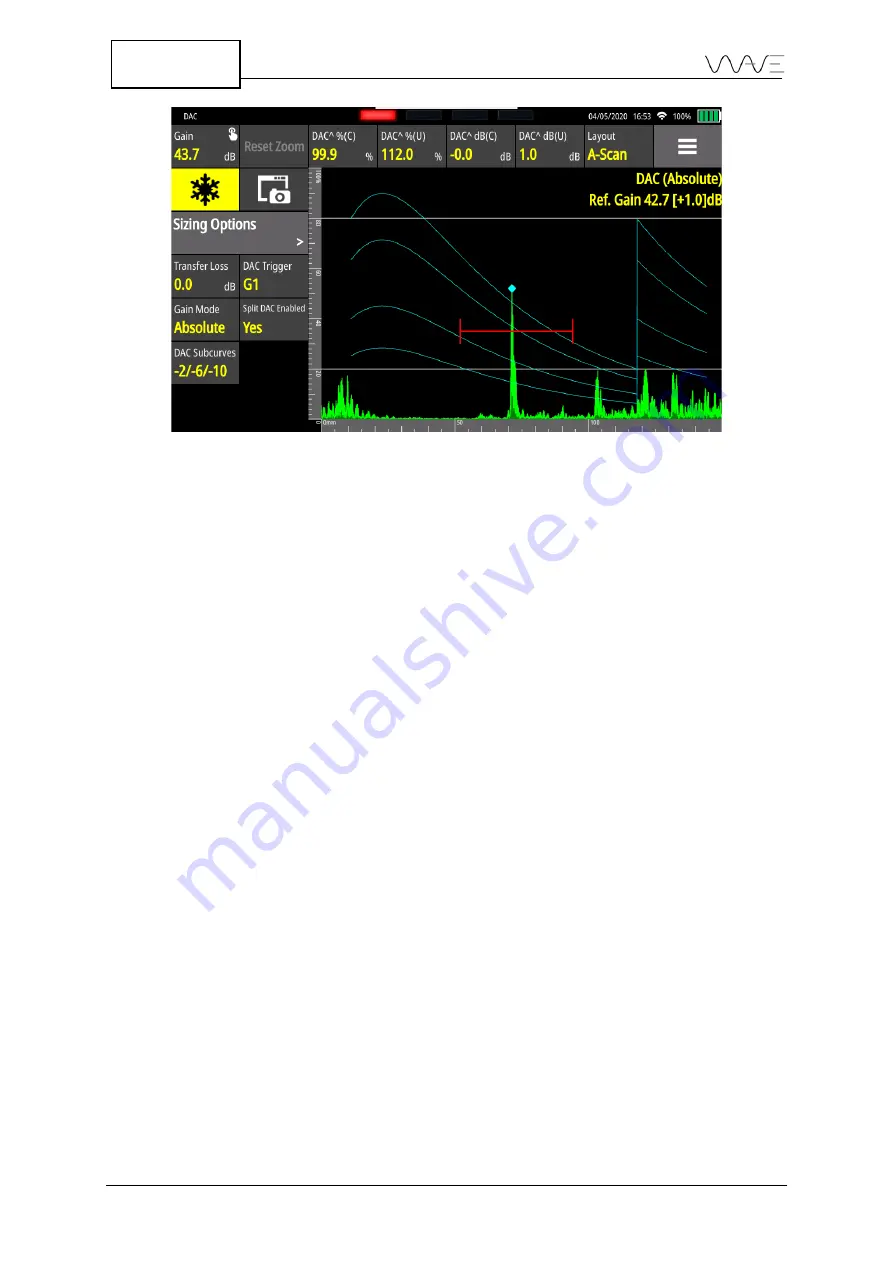
62
Wave User Manual
Version 4
Figure 45 Corrected and uncorrected measurements when +1 dB is applied
Corrected measurements, such as the screenshot above, is the recommended way to use
DAC measurements. Regardless of the
Gain Mode
, the scanning gain is 1 dB stronger
than the current reference gain (42.7 dB+ 1.0 dB = 43.7 dB). The calibration has not been
changed, so the corrected readings are also 100.0% FSH and 0.0 dB. The uncorrected
readings are 112.0% FSH and 1.0 dB. This would mean a larger reflector. It also breaks
the current calibration because a higher A-scan echo from the same reflector should give
the same DAC gain difference.
12.3
TCG
Another alternative to perform echo evaluation is by the
time correction gain
(TCG). TCG
uses a series of reference echoes from a calibration block with artificial flaws. This sizing
method is a way to compensate material attenuation and beam characteristics so that
reflectors of equal size at distinct depths into a piece will provide the same amplitude
response on A-Scan.
12.3.1
Create a TCG Curve
With the help of a calibration block, you can set a DAC curve by clicking on the
Sizing
menu. Then, click on
TCG
. Before creating a new TCG curve, you can set the Reference
Amplitude (% of FSH), configure the range size (in mm/in) and, enable/disable the function
to lock points.
Couple your probe with your standard block and try to maximise the echo from the first
reflector. Depending on your range size and the sound path associated to your reflector,
the refracted echo can be located outside of the reference window. You can move the
reference window (forward/backward) through the A-Scan until it encompasses the echo
by just clicking on the touch panel. You can also enlarge or reduce the window width by
directly clicking on the window and then adjusting it according to your needs.






























